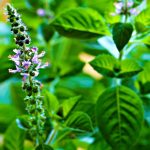5 herbal remedies for intractable headaches
Stress, hormonal imbalances, digestive disorders, chaotic eating and cervical spondylosis are the main five “sources” of the headache that strikes at you from time to time. Strike back with five heavy – though apparently fragile – pieces in the arsenal of folk phytotherapy!
1. Chamomile – the mediaeval aspirin
In ancient Greece chamomile flowers was a universal remedy, used to treat a great variety of diseases, inflammations of every description, and fever. At the dawn of the Middle Ages, another benefit of chamomile was discovered: the flowers proved helpful in alleviating pain, including headaches. As a result, modern medicine called chamomile the “mediaeval aspirin”.
Rather sceptical, present-day scientists have performed elaborate studies to establish whether the meek chamomile flower is really able to fight off headaches. The answer was affirmative: the subjects involved in such studies reported a decrease in the frequency of migraines and a significant improvement in sleep quality after 6 months of using various chamomile-based products (tea, tincture, essential oil). Conversely, when the subjects were given a placebo, the frequency and intensity of the headaches tripled.
Watch out for contraindications! Despite its apparent harmlessness, chamomile may cause abdominal bloating, canker sores, nausea, and – after you stop using it –sleeping problems, joint pain and headaches even more stubborn. More importantly, pregnant women and people allergic to plants from the Asteraceae family (which also includes hemp, chicory, dandelion, wormwood, etc.) should avoid chamomile remedies.
2. Mint – the all-purpose herb
An “international” plant – it grows all over the world, from North America to Asia and Europe –, mint (mentha piperita, commonly referred to as peppermint) is another herb with countless therapeutic benefits: people have used peppermint since time immemorial to treat pretty much everything, from headaches to toothaches, spasms, gastrointestinal problems or nausea.
The main way to knock down a headache is to sprinkle a few drops of peppermint essential oil diluted with water on a compress and to place it on your forehead. A 10% concentration solution will alleviate the headache and the feeling of nausea associated with migraine episodes.
Watch out for contraindications! Menthol, which is the main active ingredient in peppermint, amplifies the symptoms of gastroesophageal reflux, a disease occurring more and more frequently nowadays. Furthermore, it is completely inadvisable for people who suffer from asthma or allergies. Drinking peppermint tea in excess (I know, the temptation is huge, given its lovely cool flavour) may lead to miscarriage, mouth burns, cramps, flatulence, diarrhoea, tremors, a lowered heart rate, and … headaches!
3. Willow – the star of modern medicine
Salix spp., as botanists and phytotherapists call it, or white willow, as referred to by folk medicine practitioners, is the best-known antipyretic and anti-inflammatory plant. The active ingredient extracted from the willow bark – the acetylsalicylic acid – is the main component of the commonly-used aspirin, prepared in the laboratory for the first time in 1838, to become a star in today’s anti-inflammatory drug industry.
Over 2,000 years ago, at the time of Hippocrates, the father of medicine, people used to fight off fever and inflammatory processes by chewing on small pieces of willow bark. This “archaic” remedy is now available as powder capsules or willow tinctures packed in accordance with the rules of modern marketing. However, people fond of old-time remedies will peel off the bark on willow twigs or gather leaves and catkins (the willow male flowers). They use them to make tea and prepare decoctions to drink or to place on their foreheads as compresses, confirming, once more, what we have known for millennia: salicin in willow drives away pain and reduces the duration of migraines.
Watch out for contraindications! According to phytotherapists, you should not follow willow (salicin)-based treatments for more than two months in a row, as the excessive use of tea and orally administered tinctures may cause irritations of the mucous membranes. As for internal use, the plant is also inadvisable for pregnant women and people suffering from nephritis (inflammation of the kidneys).
4. Coriander – the Chinese parsley
You could easily take it for garden parsley, yet it is not garden parsley. One of the main attractions in Asian and African cuisines, coriander may look like our local parsley, but it is not one and the same, as it smells stronger and has a bitter-sweet, slightly spicy taste.
In traditional Ayurvedic medicine, coriander was used to relieve sinus pressure and headaches by pouring hot water over a handful of green coriander seeds and inhaling the resulting vapours. This proves that inhalation is an age-old technique. The same goes for the habit of seasoning the dishes with coriander seeds, leaves, and roots. Modern pharmaceutical industry promotes a wide range of coriander-based products – tinctures, infusions, salve oils – as remedies for headaches, arteritis, and diabetes.
Watch out for contraindications! Breathing problems, allergic reactions, and liver disorders are among the most frequent adverse effects of excessive use of coriander seeds.
5. Linden– the soul-healing tree
Its flavour acts as a healing ointment for “wounded” souls and is like a psychotherapy session for those who experience extreme edginess or anxiety. When steeped in boiling water, its flowers restore control over blood pressure and inflammatory processes, fix digestive problems and alleviate migraines.
Watch out for contraindications! What makes the difference between beneficial and harmful effects is how you prepare the infusion: you should leave the linden flowers in boiling water, in a covered pot, for no longer than 4 minutes. The steeping time for the minced plant wrapped in tea bags available in stores should not exceed10 – 15 minutes, as stated in the brewing instructions. This is because the moment it turns dark red, the tea becomes toxic. On the other hand, the active ingredients in linden flowers thin the blood, thus increasing the risk of bleeding: as a result, linden is not recommended for people suffering from anaemia (as it hinders the absorption of iron) or heart conditions (as it speeds up the heart rate). And, last but not least: never exceed the prescribed amount; while a cup of tea will calm you down, three or four cups will do exactly the opposite, since linden acts as a powerful nervous stimulant.
An extra tip: go for a low fat diet
Let us be honest: irrational nutrition will render ineffective any of the above-mentioned remedies. In other words, do not expect linden tea or coriander seeds, for instance, to fix the damage done at the highest level of your body by fat-soaked foods. When I say “the highest level”, I mean the top extremity of our body – the head. When I say “fat-soaked” foods, I mean the same thing you have in mind (and probably quite often, on your plate): bacon, sausages, steaks, fat cheese, industrial foods, fast foods – you should know better than me. Do you relish them without getting headaches? Most certainly, you do not!
The proof is an experiment involving a group of American subjects suffering from migraines, who were put on a very low fat diet (less than 10-15% of the daily calorie intake came from fatty foods). At the end of the 12-week study, all subjects reported a 40% decrease in their headaches frequency. Moreover, the pain they experienced was by 66% less severe and the length of the migraine episodes had decreased by 70%.
Does it sound too good to be true? Not at all – it is just too good not to try!

This work is licensed under a Creative Commons Attribution-NonCommercial-NoDerivatives 4.0 International License.

 Previous Post
Previous Post Next Post
Next Post



